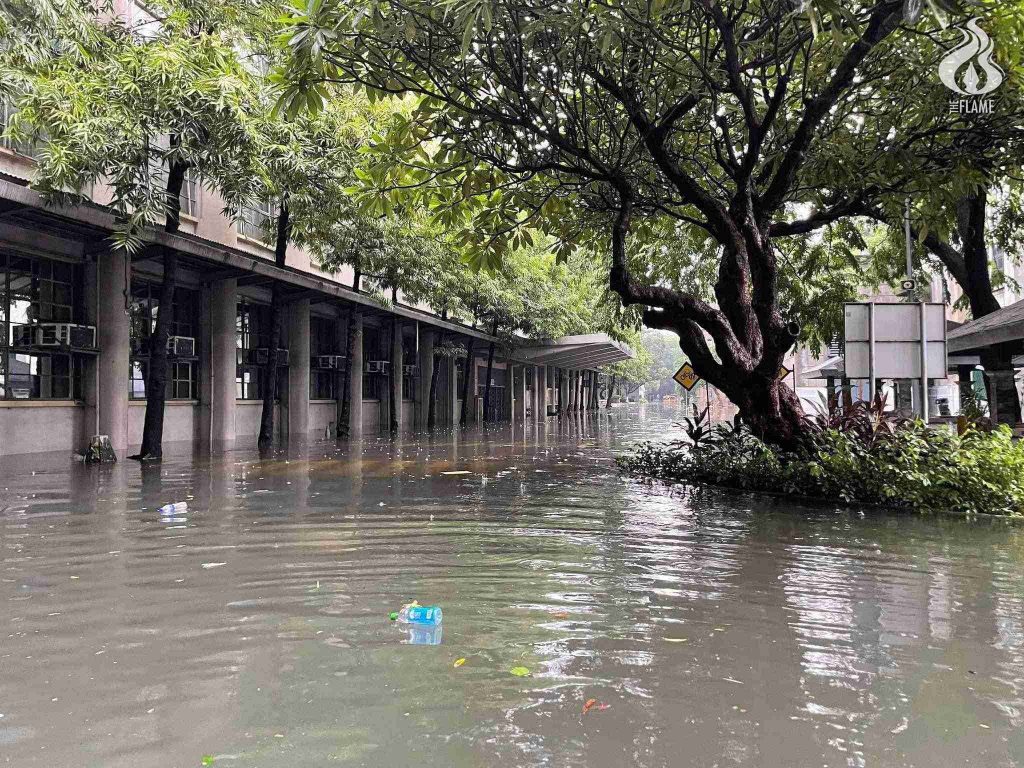
THE UST stormwater drainage project is not enough to prevent flooding in the campus when surrounding areas are also inundated, the assistant head of the University’s Facilities Management Office (FMO) said.
According to FMO Assistant Director Albert Surla, the project transfers water into España Avenue and adjacent areas’ drainage systems, but when surrounding areas are also flooded, floodwater flows into the campus.
“Kasi mas mababa tayo, kahit lakihan mo siya ng lakihan kung dinadalhan din tayo ni España ng water, wala din. May certain level lang tayong kayang i-detain na volume of water,” Surla told The Flame.
(Because we are in a low-level area, even if you increase the capacity [of the drainage project], if España keeps on bringing water, then nothing. We only have a certain level of water that we can detain.)
“After that, if España and the surrounding areas are flooded, most likely we will also be flooded,” he added.
The University’s improved drainage project, which began in 2018, seeks to hold water amounting to four-and-a-half olympic sized swimming pools or about 11.25 million liters of water.
The project, which the University aims to finish by September, is in its second and final phase, which involves the installation of additional drainage channels, larger pipes and new plumbing systems.
Last July 24, floodwaters swamped UST and other Metro Manila areas, following torrential rains caused by the enhanced southwest monsoon and super typhoon “Carina.” The devastation caused by the cyclone prompted the government to place the capital region under state of calamity.
Some Thomasian students staying in nearby dormitories were also stranded because of the flooding but were given food packs by various University offices.
Several establishments in the campus, including the UST Main Building, San Martin de Porres, St. Raymund de Peñafort and Fr. Roque Ruano buildings were also flooded, while the UST block letters displayed at the UST Plaza Mayor were knocked down by strong winds.
The facilities only sustained minor damage, such as wet outlets, ceiling leaks and disintegrated paint, according to Surla.
“There are no major [damage]. The elevators are raised when the rain is getting heavy. So far, there are no major damages,” he said.
According to Surla, the University is expected to resume operations by Monday, July 29 as cleaning the affected buildings and nearby areas is still in progress.
The official said FMO is conducting measures to prevent flooding in the campus but Metro Manila should assess its current drainage systems to address the flooding problem.
“As we can see what happened on Wednesday, the whole metro was flooded,” the FMO assistant director said.
“We can only do [so] much, we really need the whole community [on what to do with] the drainage system, improvement of drainage system and pumping stations,” he added.
Super typhoon “Carina,” which left the Philippine area of responsibility on Thursday morning, affected more than one million individuals in the country, according to reports from national authorities. F



